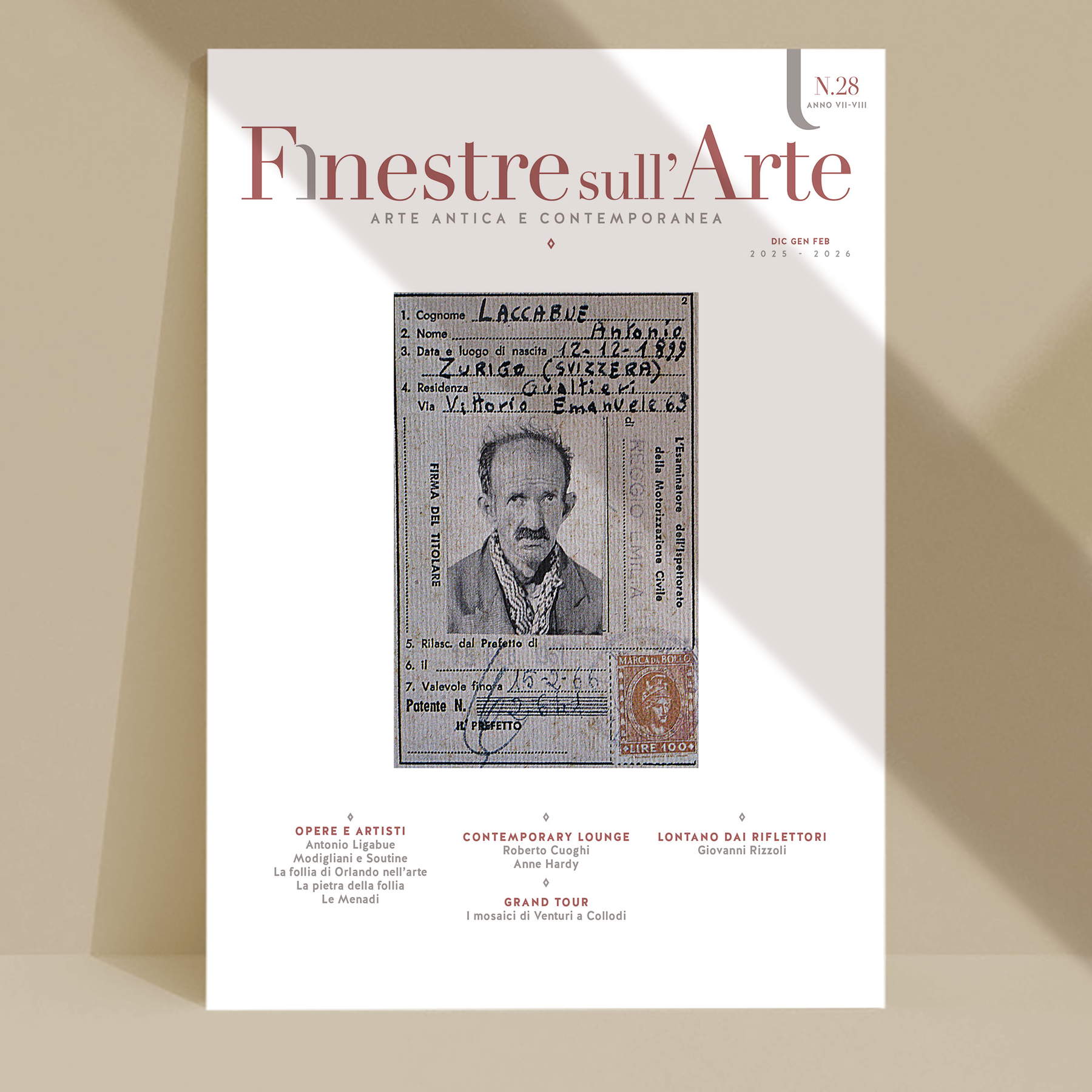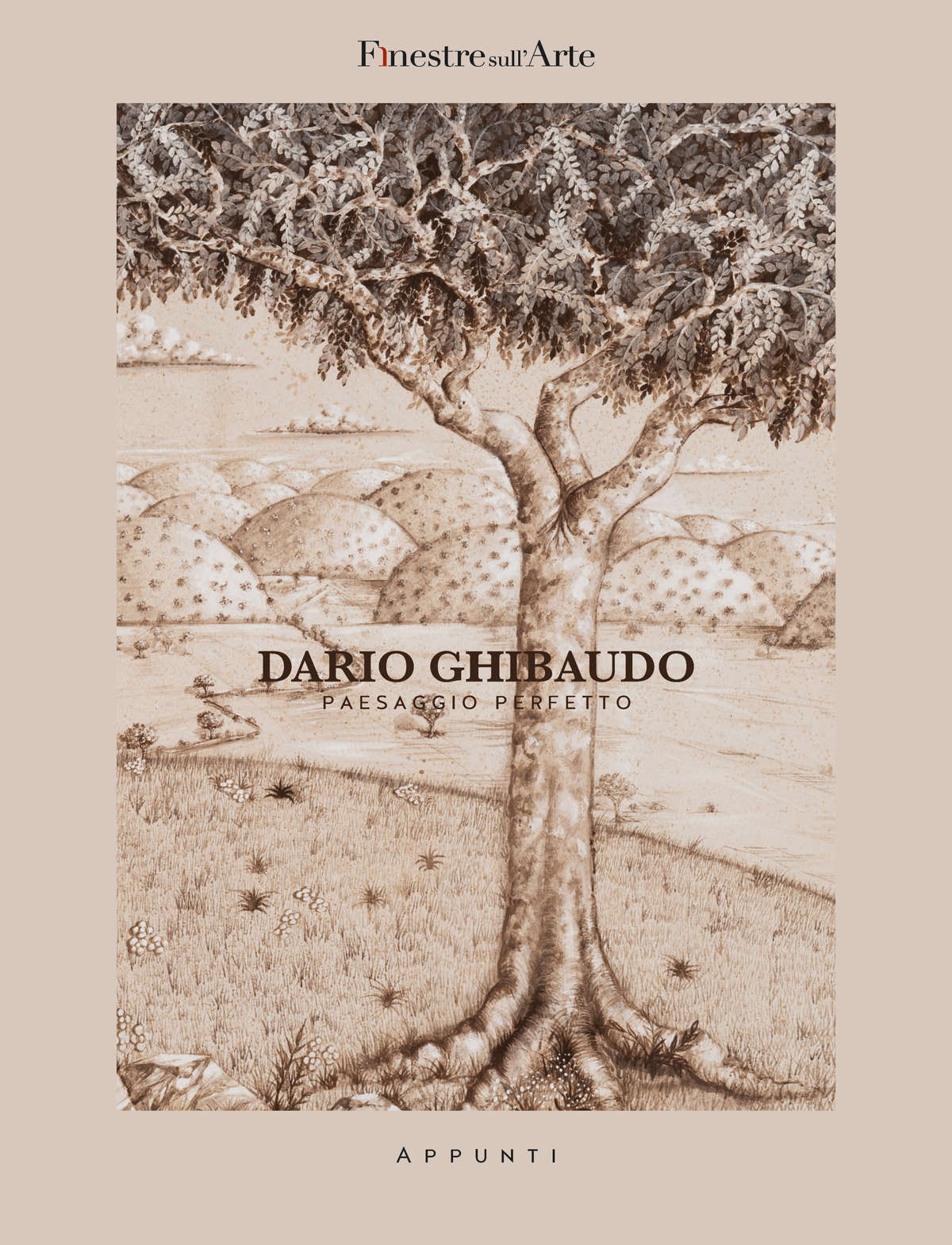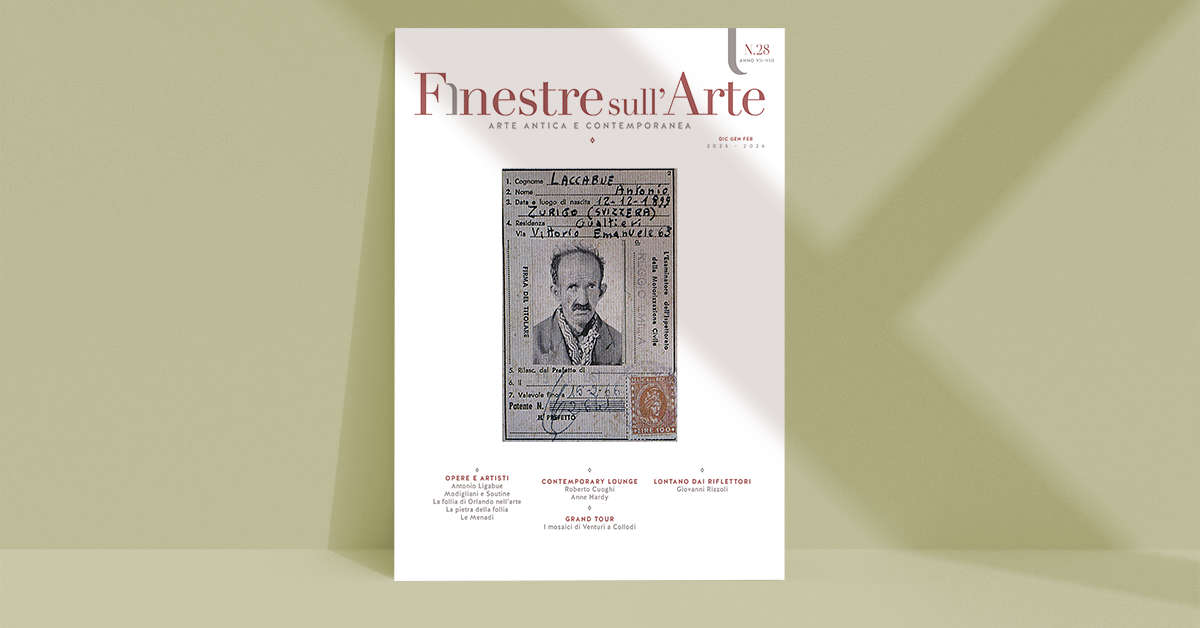Issue 28 of the quarterly magazine Finestre Sull’Arte, entirely dedicated to madness, is out now, an edition that confirms the publication’s commitment to offering solid insights, constant attention to current events and a critical look at the central issues of artistic debate. The new issue, 176 pages, is available exclusively by subscription until Nov. 23 at a price of 39.90 euros plus shipping: one can subscribe from this link, where four issues of the magazine are also available for free to browse through to get a feel for it. For the first time, the magazine also includes a special insert: a volume, Perfect Landscape, dedicated to the inks of Dario Ghibaudo, one of the most interesting contemporary Italian sculptors, accompanied by a text by Marco Meneguzzo, which further enriches the editorial proposal and stands as the first chapter of the new series Appunti di Finestre sull’Arte. A gift we wanted to give to our readers, both those who have been following us for a long time and new ones.


The opening is entrusted to the section devoted to current events. In Siena, the Santa Maria della Scala complex returns to the public the Thebaid, a 14th-century fresco cycle discovered in 1999 and finally restored. Ilaria Baratta ’s contribution traces the stages of the operation, with interventions by Alessandro Bagnoli, who directed the restoration, and the reasons for the work’s importance in the history of Tuscan art. Still on the topical side, a wide-ranging debate addresses the issue of the recognizability of contemporary Italian art abroad. Discussing it are Eva Brioschi (Director, Dalle Nogare Foundation, Bolzano), Fabio Cavallucci (Critic and curator; professor of History of Contemporary Art, Academy of Fine Arts of Carrara), Stefano Collicelli Cagol (Director, Center for Contemporary Art “Luigi Pecci,” Prato), Giacinto Di Pietrantonio (Critic and curator), Matteo Innocenti (Curator; professor of Contemporary Art Languages, Accademia di Belle Arti di Verona), Damiana Leoni (Vip representative Italy, Art Basel), Stefano Raimondi (Critic and curator; Art Director, Art Verona), who offer different but complementary perspectives on the relationship between national art production, exhibition system and international perception.
In the Works and Artists section, the issue offers a set of looks across different eras and sensibilities. The cover article, by Federico Giannini, reflects on the theme of Antonio Ligabue’s critical and cultural relocation, proposing new keys to interpreting an artist often confined within reductive categories. Maurizio Cecchetti explores the representation of madness between modernity and contemporaneity, while Ilaria Baratta rereads the character of Ariosto’s Orlando and his emotional metamorphoses as a mirror of a narrative transformation that leads from love to bewilderment, always through the filter of art. Jacopo Suggi tackles the relationship between madness and creation in the work of Modigliani and Soutine, while Francesca Gigli investigates the logic of delirium in Nordic painting, showing how the vision of the uncanny became a true figurative language expressed through allegories of madness. The theme continues with Noemi Capoccia, who analyzes madness in dance from Maenads to Tarantism, in a journey that interweaves cultural history and anthropology.
The journey continues with the Grand Tour, which this time leads to Pinocchio Park, where Federica Schneck narrates Venturino Venturi’s mosaics, a suffered work that translates Collodi’s fairy tale into a visual phantasmagoria reflecting the mental state of its author. The Contemporary Lounge, on the other hand, offers two in-depth studies dedicated to languages and research of the present: Tristana Chinni presents Roberto Cuoghi and his exploration of the limits of the possible, while Emanuela Zanon reflects on the work of Anne Hardy, investigating her ability to subvert the normative gaze through installations and images.
Closing the issue is a double focus on the work of artists and the protection of heritage. For the section Far from the Spotlight, Bruno Corà dedicates an analysis to Giovanni Rizzoli, between epiphanies and astonishment, while Under the Spotlight focuses on the Cathedral of Pisa, with Carolina Vatteroni ’s intervention illustrating the restoration of the wall facings of the south transept, a complex and significant operation for the preservation of the monument.
 |
| The new issue of Finestre Sull'Arte magazine is dedicated to madness. And there's a gift: how to get it |
Warning: the translation into English of the original Italian article was created using automatic tools. We undertake to review all articles, but we do not guarantee the total absence of inaccuracies in the translation due to the program. You can find the original by clicking on the ITA button. If you find any mistake,please contact us.